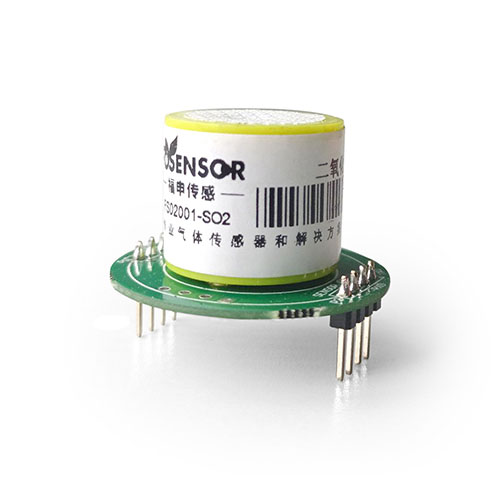SO2 sensor - Sulphur dioxide detection in air pollutants
In recent years, the control of air pollution has achieved remarkable results, thanks to our ever-advancing ambient air monitoring technology. Atmospheric pollutants are substances that are emitted into the atmosphere due to human activities or natural processes and have harmful effects on people and the environment. Atmospheric pollutants can be summarized into two main categories according to their existence: aerosol pollutants and gaseous pollutants.

Atmospheric Pollutants - Aerosolized Pollutants
Aerosol state pollutants are those small solid particles, liquid particles, or their suspension systems in the gaseous medium with negligible settling velocity in air pollution. According to the source and physical properties of aerosols, they can be categorized as dust (1~200μm), smoke (0.01~1μm), fly ash, black smoke, fog, and so on.

Air Pollutants - Gaseous Pollutants
Gaseous pollutants are pollutants that exist in a molecular state. There are many types of gaseous pollutants, which can be divided into several categories: sulfur-containing compounds, mainly SO2; nitrogen-containing compounds, mainly nitrogen oxides and nitrogen dioxide; carbon oxides; organic compounds and halogen compounds.

Sulphur dioxide detection
Sulphur dioxide, a toxic gas, when it escapes into the air, combines with water molecules to form acid rain, which causes serious damage to the environment. It not only corrodes the surfaces of buildings, but also causes serious damage to plants and animals. Therefore, Sulphur dioxide detection and control becomes important. So, what is the standard of Sulphur dioxide detection? Let’s find out together.
Ambient Air Quality Standards
Sulphur dioxide detection standards are mainly divided into two categories: ambient air quality standards and industrial emission standards.
In terms of ambient air quality standards, different countries and regions have different limits on the concentration of sulfur dioxide. In China, the ambient air quality standards stipulate that the daily average value of sulphur dioxide shall not exceed 60 μg/m3 and the annual average value shall not exceed 20 μg/m3. In the United States and the European Union, the corresponding concentration limits are 75 μg/m3, 140 μg/m3, 30 μg/m3 and 350 μg/m3, 125 μg/m3, 20 μg/m3 respectively. These standards were established to safeguard people’s health and environmental sustainability.
Industrial Emission Standards
Industrial emission standards, on the other hand, are designed to limit the emission of harmful substances such as sulfur dioxide during industrial production. China’s industrial emission standards stipulate that the concentration of sulfur dioxide emitted by thermal power plants, iron and steel plants, petrochemical plants and other air pollutants shall not exceed 35 mg/m3, and the total amount shall not exceed 0.5 g/kWh. In contrast, the standards of the United States and the European Union are 200 mg/m3, 0.8 g/kWh and 400 mg/m3, 1.2 g/kWh respectively. These standards are implemented to reduce the impact of harmful substances such as sulfur dioxide on the environment and human health.

Sulphur dioxide sensor
For sulfur dioxide detection, Fosensor recommends the Electrochemical Sulfur Dioxide Gas Sensor FS02001, which is ideally suited for ambient air quality monitoring systems and instruments.
By knowing these sulfur dioxide detection standards, we can better understand its impact on our lives and the environment. It is also hoped that this information will help provide a deeper understanding of the dangers of sulfur dioxide and the importance of detection and control.





